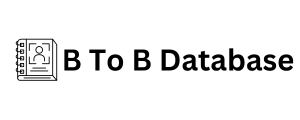Special Database What Do Those Stats Really Mean
As data becomes increasingly important for decision-making in businesses, special databases have become more commonplace. These databases offer a wealth of information that can help businesses understand their customers, track their performance, and make more informed decisions. However, interpreting the statistics generated by these databases can be a challenge. In this article, we’ll take a closer look at what these stats really mean.
First, it’s important to understand what a special database is
Essentially, it is a database that has been designed specifically for a certain type of information. For example, a database might be designed to track sales data, customer demographics, or website traffic. By focusing on a specific type of data, these databases can generate more accurate and useful statistics.
The most common statistics generated by special databases include averages, totals, and percentages. These statistics can be useful for a variety of purposes, including tracking sales, monitoring customer behavior, and evaluating the effectiveness of marketing campaigns.
Averages are one of the most common statistics generated by special databases. An average is simply the sum of all values divided by the number of values.
Totals are another common statistic generated by special databases. A total is simply the sum of all values.
Percentages are also commonly used in special Latest Mailing Database databases. A percentage is a value expressed as a fraction of 100.
While these statistics can be useful, it’s important to understand what they really mean. For example, averages can be misleading if there are extreme values in the data. If a business has one exceptionally high sales day, the average sales per day may be skewed. In this case, it may be more useful to look at the median, which is the value that separates the highest 50% of values from the lowest 50% of values.
Similarly, totals can be misleading if they are not compared to other data. For example, if a business sees a large increase in website traffic from one month to the next, it may be cause for celebration. However, if the increase is due to a change in the way website traffic is being measured, it may not actually represent an increase in customer interest.
Percentages can also be misleading if they are not based on a representative sample
For example, if a business is tracking the percentage of customers who make a purchase after visiting a website, but only tracking customers who have already made a purchase, the percentage will not accurately reflect customer behavior.
In conclusion, special databases can offer a B to B Database wealth of information for businesses. However, it’s important to understand what the statistics generated by these databases really mean. By taking a closer look at the data, businesses can make more informed decisions and avoid being misled by misleading statistics.

